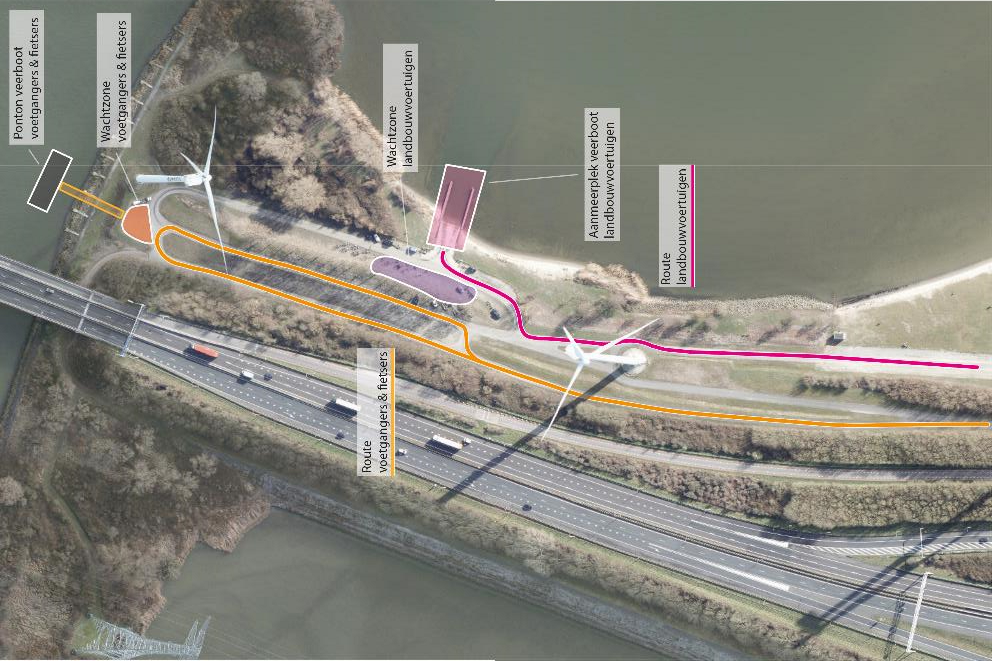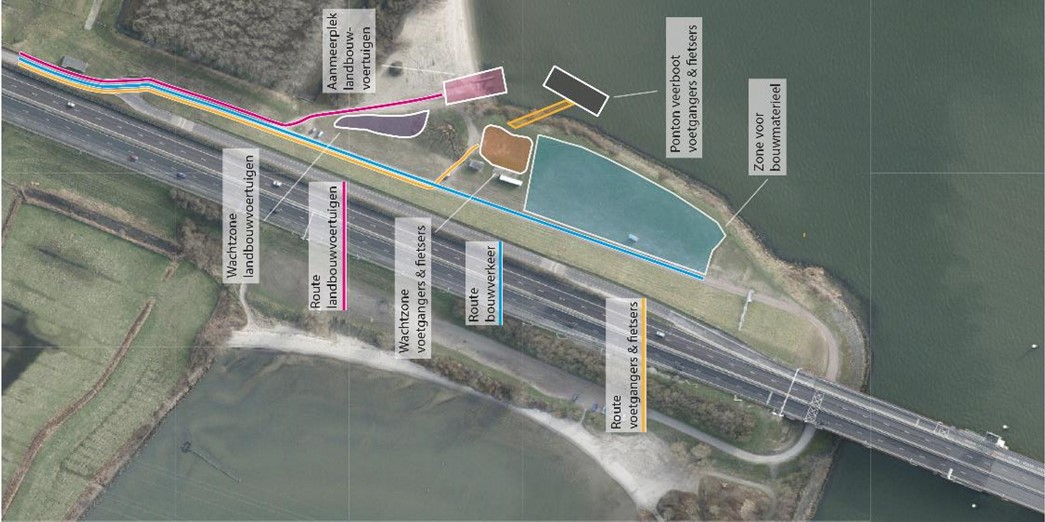In the summer of 2023, the Province of South Holland faced a challenge: the temporary closure of the Haringvliet Bridge, a crucial link in the region for people traveling by car, bike, or on foot. Mobycon was commissioned by Rijkswaterstaat, the Directorate-General of the Ministry of Infrastructure and Water Management of the Netherlands, in collaboration with Zuid-Holland Bereikbaar (Keeping South Holland Moving), to find a solution that minimized impacts on the region’s traffic capacity. Together they conducted a study and created alternative scenarios that would maintain multi-modal accessibility throughout the region.
Mobycon assessed the options according to the following criteria: accessibility, traffic safety, social safety, comfort, logic, feasibility, robustness/security, and cost. The client’s preferred option was two temporary ferry connections parallel to the Haringvliet Bridge. The outcome was the successful mobilization of over 1,000 daily bike and pedestrian ferry passengers, as well as an effective custom solution for agricultural vehicles. This approach ensured that farmers could continue their work, nurseries and schools remained accessible, and that emergency responders had a reliable alternative.
Once the ferry scheme was selected, Mobycon investigated possibilities and costs with different operators. Mobycon inventoried the temporary infrastructure requirements such as pontoons, waiting areas, and lighting. Additional temporary traffic measures were necessary to ensure the accessibility of ferry infrastructure, including considerations for usability, accessibility and comfort. Additionally, Mobycon prepared a communications plan for stakeholders, users, and other inhabitants of the area.
Finally, Mobycon supported Zuid-Holland Bereikbaar and Rijkswaterstaat during the implementation of the project by overseeing the installation of temporary traffic measures and measures to make travel by bike easy, such as bike sharing, promotional programs, detour routes and ongoing communication with employers, visitors, and inhabitants of the area.



